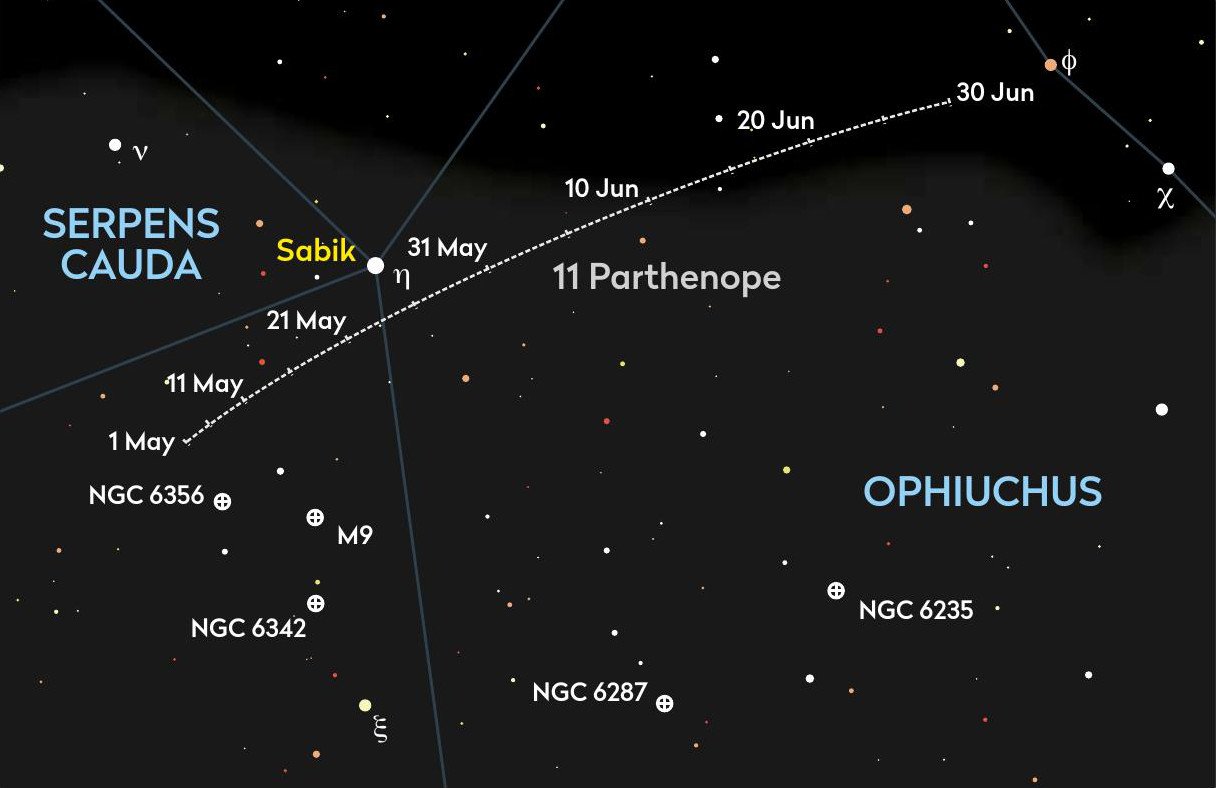Follow main belt asteroid 11 Parthenope as it tracks westward beneath Ophiuchus

The large, sparse constellation of Ophiuchus, the Serpent Bearer plays host to this month’s featured asteroid, 11 Parthenope. Shining at mag. +10.4 at the start of May, Parthenope will brighten slightly through the month to peak around mag. +9.5 in early June. Opposition next occurs on 6 June when the asteroid will be below the main body of the serpent bearer, slightly south of a point roughly one-quarter the way along an imaginary line between Sabik (Eta (η) Ophiuchi) and Phi (φ) Ophiuchi.
During May, Parthenope’s track starts further to the east, approximately 1.3° north of the mag. +8.4 globular cluster, NGC 6356. It then travels west, in the gentlest of north-arcing curves to pass 0.8° south of Sabik between 24 and 26 May. At this time it will be around mag. +9.7, close to peak brightness.
Unless you have large binoculars, a small telescope is the minimum instrument required to see Parthenope, and the best technique to record it is the classic blink method. Here you record the starfield you expect Parthenope to be passing through, noting as many stars as you can see. A photograph makes this easy, but sketching works too. Make multiple recordings over several clear nights and compare the results. If one of the stars appears to move, that’s likely to be Parthenope. At the end of June, it will be 1.5° to the east of mag. +4.3 Phi Ophiuchi.
Parthenope is a main belt asteroid, the orbit of which takes it out as far as 2.7 AU from the Sun and in as close as 2.2 AU. Its orbital period is 3.84 years, the asteroid rotating on its axis once every 13.7 hours. It’s an S-type asteroid, which means it’s siliceous or stoney. This type accounts for 17 percent of all known asteroids, a class which tends to be fairly reflective, with average albedos (reflectivity) around 20 percent.
CHART: PETE LAWRENCE